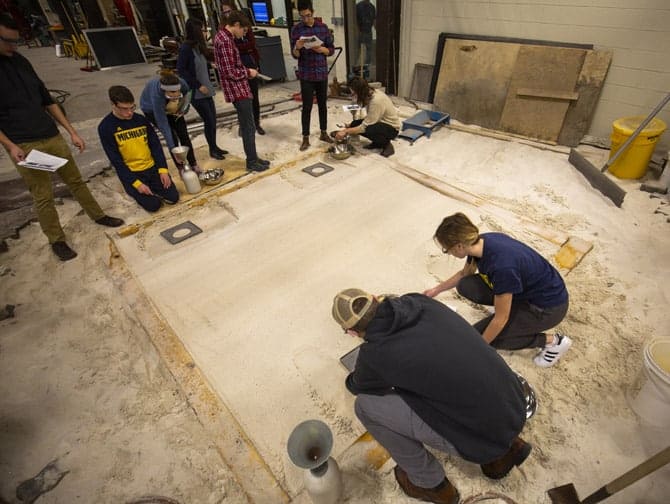Geotechnical Engineering Labs

The University of Michigan has complete laboratory and field facilities and equipment devoted to geotechnical and geoenvironmental engineering education and research.
The Geotechnical Engineering Laboratory is equipped with all standard geotechnical testing equipment, including sieves, hydrometers, Atterberg limit devices, permeameters, shaking table for relative density, consolidometers, compaction molds and shear strength testing systems.
The F.E. Richart Soil Dynamics Laboratory is a fully equipped geotechnical laboratory with specialized testing equipment to evaluate the static and dynamic properties of soils. It houses a CKC Cyclic Triaxial Machine, a GCTS combined Resonant Column, Cyclic Torsional and Cyclic Triaxial Device, a Reich Quasi-Static Tensional Simple Shear/Resonant Column apparatus, a Geocomp Constant Rate of Strain Consolidation Device, a Geocomp Triaxial Stress Path device, and a variety of bender element systems.
The Optical Soil Characterization Laboratory contains the Sedimaging system for optically determining size distributions for particles smaller than 2 mm and the Stereophotography (3D) Translucent Segregation Table system for particles 2 mm and larger.
These facilities are used throughout the academic year for undergraduate/graduate education and for advanced soil characterization and research. The Department of Civil and Environmental Engineering also houses a 20 foot diameter bottomless indoor sand pit facility for testing physical models.
In addition to laboratory facilities, the Geotechnical Engineering program at the University of Michigan operates a 20-ton piezocone penetration test (uCPT) rig (7 ton dead weight) for classroom instruction and research. The fully equipped system contains data and image acquisition equipment for seismic cone (SCPT) and vision cone penetration (VisCPT) testing. The rig is also used for soil sampling and flat plate dilatometer (DMT) testing.
The University of Michigan provides a range of other instruments for high-resolution imagery, including X-ray Computed Tomography, Scanning Electron Microscopy, and Atomic Force Microscopy. These can be used to characterize grain surfaces and to study the changes in surface morphology when subjected to prolonged loading.
Related Research
Graduate Study